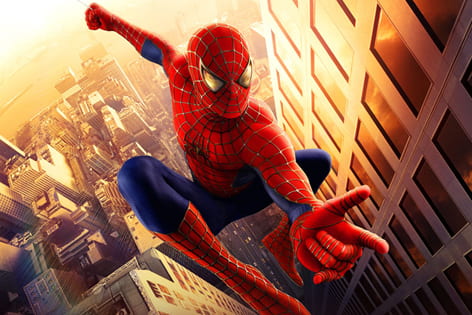Making physics fun
Michael Dennin, UC Irvine physics & astronomy professor, will discuss the science behind superheroes 8-9 a.m. Tuesday, May 19, at the University Club. A complimentary breakfast will begin at 7:30 a.m.

With amazing feats of speed, strength and agility, superheroes have captured our imaginations since the first comic strip.
But if someone really were faster than a speeding bullet, more powerful than a locomotive or able to leap tall buildings in a single bound, what laws of physics would need to be overcome? And how would a superpower actually affect a hero and his or her surroundings?
Michael Dennin, UC Irvine physics & astronomy professor, will discuss the science behind superheroes 8-9 a.m. Tuesday, May 19, at the University Club. A complimentary breakfast will begin at 7:30 a.m.
Here, Dennin answers questions about his popular freshman course and research into the physics of foam and bubbles:
Q: Why do you teach “The Science of Superheroes?”
A: Too many adults are afraid of or nervous about science, especially physics. Yet children are naturally drawn to scientific questions. A course that connects people to a positive experience – such as watching or reading about superheroes – serves as a great starting point to rekindle an interest in science. Also, there are actually some very interesting and deep science issues one can discuss in the context of superheroes.
Q: What can people learn in your class?
A: The course introduces students to the process of evaluating scientific validity. Many questions facing society require an ability to distinguish real science from fake science. Here, students can develop these skills without the added complication of issues such as politics or religion. Some of the exciting physics we discuss are the bending of light to achieve invisibility and the essential elements of achieving flight.
Q: Which superhero is your favorite and why?
A: I favor Spider-Man, with Batman a close second. This is largely because they were the two I followed most closely as a kid. I also like the science connected with their abilities and find I can get the most out of them in my class. Spider-Man and Batman constantly try to save people who are falling. In this scenario, one can compare the damage done by the fall to the damage done by the catch. The key physics issue is based on Newton’s laws of motion – the damage to a person is directly related to how much and how quickly the velocity changes. In this regard, Spider-Man’s webs are extremely useful, as they stretch and increase the stopping time, reducing damage. Airbags operate on this same principle.
Q: You’ve served as an expert for media on the science of Superman, Spider-Man, Batman and “Star Wars.” What do you enjoy about this?
A: One of the best parts for me is to connect with people about the science. The media reach a very large audience. It’s rewarding when people stop me and say they liked what they heard me talk about – especially when it leads them to consider the science I was discussing.
Q: Your research focuses on the behavior of foam and bubbles. What do you try to learn, and why does it interest you?
A: Foam is made of gas bubbles with water in between. Therefore, every foam molecule is in a fluid state. Yet foam can act like a solid; for example, shaving cream holds its shape and does not flow. How can something be both a fluid and a solid? Trying to understand this mystery is very exciting. Foam is used in activities ranging from fire fighting to oil recovery. Both of these require foam to flow; we try to understand how this happens.
Q: What do you like most about UCI?
A: I would have to say my interaction with the students, both in research and in class. It’s very rewarding helping students figure out what excites them, what they are good at and what they can accomplish with their lives.